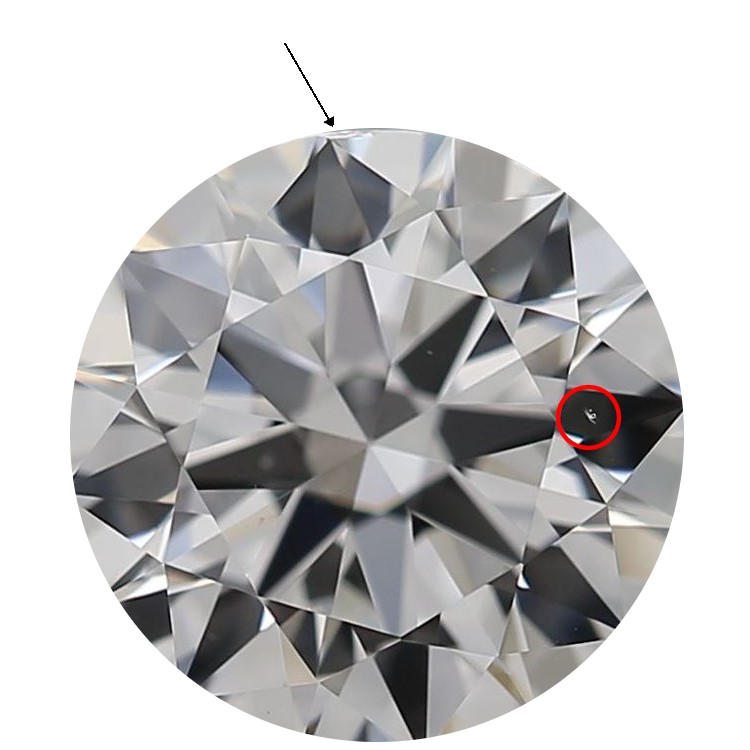Diamond Inclusions: Chip | Rare Carat
Diamond Inclusions: What is a Chip?
Here's how GIA represents a chip on their diamond plots:

Diamond chips like this are most commonly found at the furthest most edges of a diamond, like the girdle (the outer edge towards the top) or the culet (the ‘point’ at the bottom of the stone). They are usually the result of wear and tear, or accidental bumps.
We’re not super happy about encouraging you to buy diamonds that have chips in them, however the level of worry you should have about a chip really does depend on how big it is and where it is, as well as the clarity grade. Here you'll see a chip circled in red, and the black arrow pointing to it's older cousin the cavity.

Some chips can even be eliminated altogether by re-cutting or re-polishing the stone if it cannot be hidden with your particular ring setting and you really, really can’t stand it (although this brings with it its own risks such as the stone basically exploding under the pressure).
Other chips can be far more sinister. Is the chip likely to impact the integrity of the stone over the years (i.e. grow in size and result in a whack cracked diamond)? Probably, yes. Is the chip visible to the naked eye? Often, yes. Can the chip be polished out, and how might that affect the weight and the symmetry of the diamond? Then skip the chip.


Chip Diamond Inclusion FAQs